BIO 235 MIDTERM 1 STUDY NOTES - Athabasca University
Document Content and Description Below
BIO 235 MIDTERM 1 STUDY NOTES - Athabasca University CHAPTER 1 Anatomy – the science of body structures and the relationship among them Physiology – The science of body functions – how body ... parts work Dissection – careful cutting apart of body structures to study their relationships Levels of Structural Organization: Chemical (letters of alphabet) – most basic level that includes atoms and molecules atoms → smallest units of matter that participate in chemical reactions molecules → two+ atoms joined together Cellular – (words) – molecules combine to form cells (basic structural and functional units of an organism that are composed of chemicals) - smallest living unit in the human body Tissue – (words put together to make sentences) - groups of cells and the materials surrounding them - work together to perform a function - four basic types: epithelial, connective, muscular, nervous Organ – (sentences make paragraphs) - two or more different types of tissues are joined together to form organs - stomach, skin, lungs, bones. Heart, brain System – (chapter in our language) - consists of related organs with a common function - ex. Digestive system (mouth, salivary glands, pharynx,etc.) - pancreas is part of both digestive and endocrine system Organism (book) - any living individual - all body parts functioning together Systems of the Human Body 11 essential systems of the human body Integumentary System - COMPONENTS → skin and associated structures (hair, fingernails, toenails, sweat glands, oil glands) - FUNCTIONS → protects body, regulates body temp, eliminates some waste, makes vit D, detects sensations (warmth, pain) Skeletal System - COMPONENTS → bones and joints of the body and associated cartilages - FIUNCTIONS → supports and protects body, provides surface area for muscle attachments, aids body movements, houses cells that produce blood cells, stores minerals and lipids Muscular System - COMPONENTS → skeletal muscle tissue (muscle attached to bone) - FUNCTIONS → participates in body movements, maintains posture, produces heat Nervous System - COMPONENTS → brain, spinal cord, nerves, eyes and ears - FUNCTIONS → generates action potentialsto regulate body activities, detects changes in bodys internal and external environment, interprets changes and responds by causing muscular contractions or glandular secretions Endocrine System - COMPONENTS → hormone producing glands (pineal gland, hypothalamus, pituitary gland, thymus, thyroid gland, parathyroid glands, adrenal glands, pancreas, ovaries and testes) - FUNCTIONS → regulates body activities by releasing hormones (chemical messengers transported in blood from endocrine gland to target organ) Cardiovascular System - COMPONENTS → blood, heart and blood vessels - FUNCTIONS → heart pumps blood t [Show More]
Last updated: 1 year ago
Preview 1 out of 40 pages
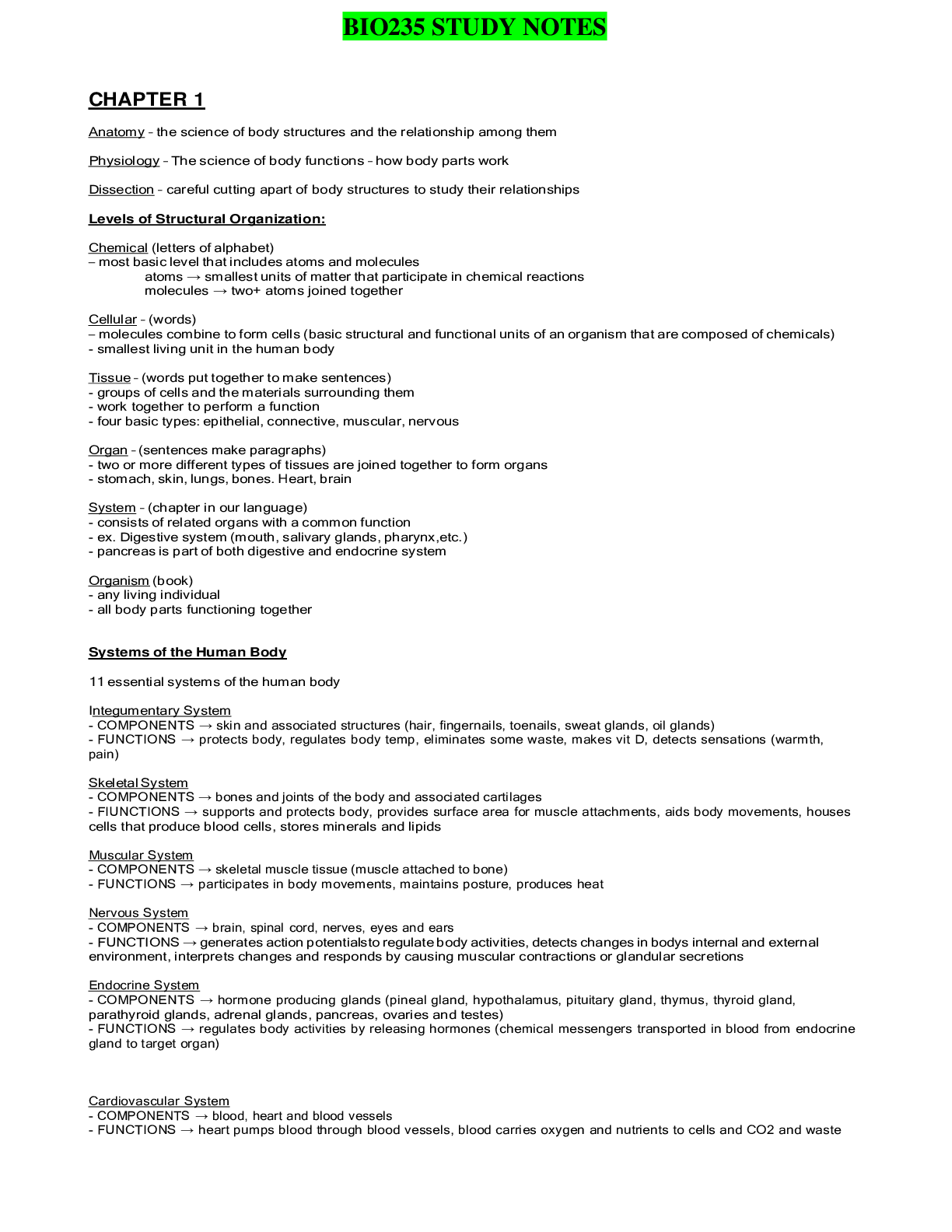
Reviews( 0 )
Document information
Connected school, study & course
About the document
Uploaded On
Jul 20, 2022
Number of pages
40
Written in
Additional information
This document has been written for:
Uploaded
Jul 20, 2022
Downloads
0
Views
56


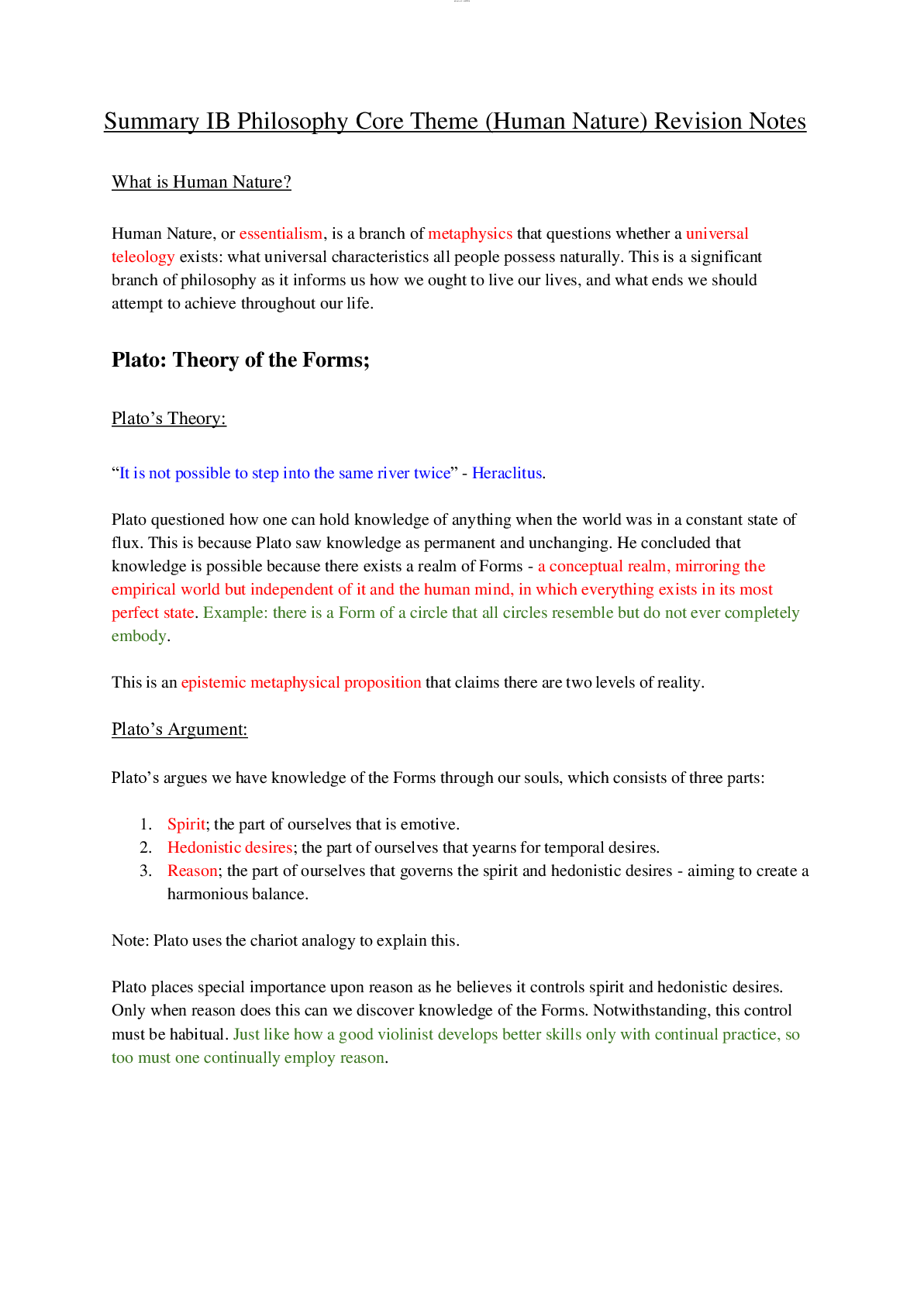


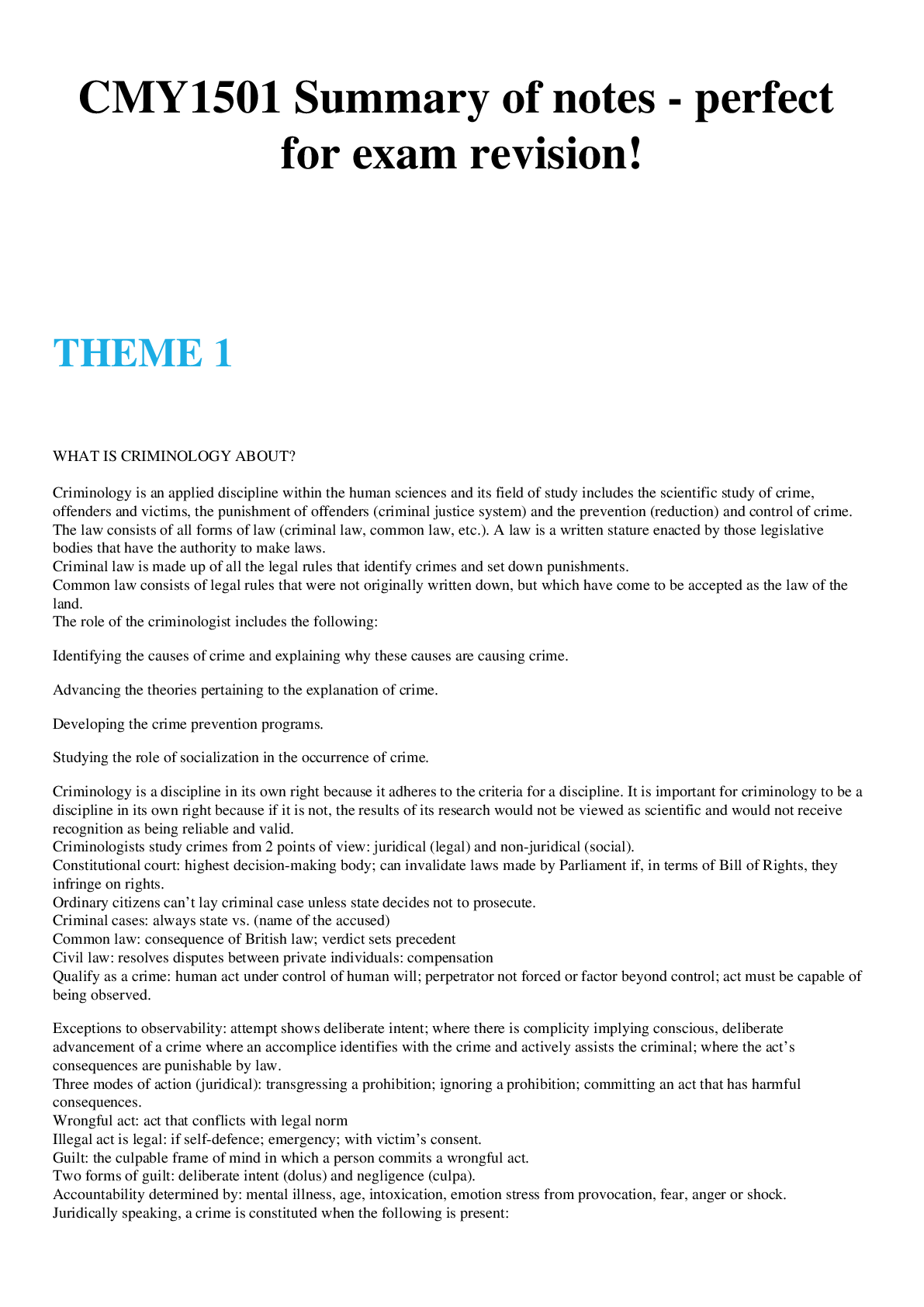
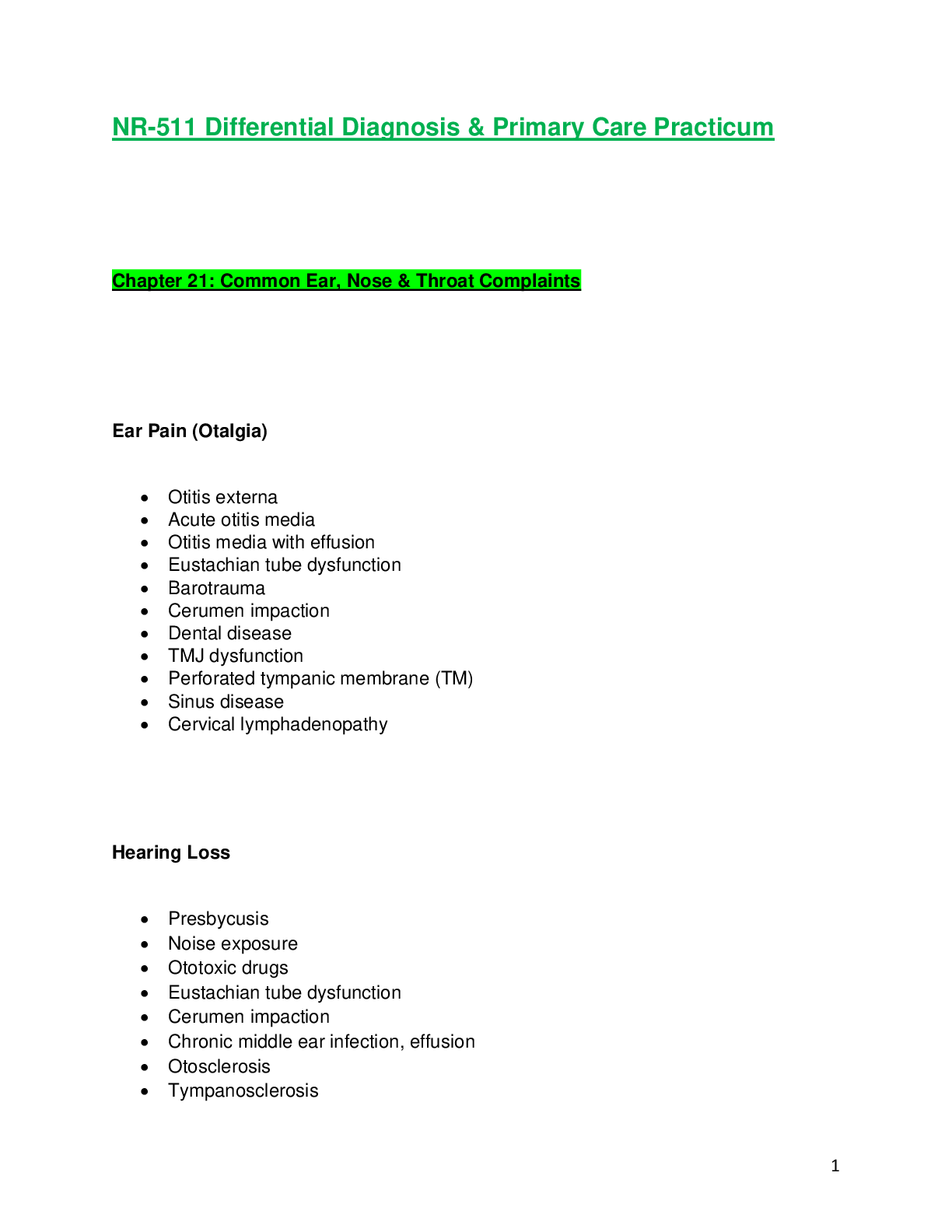

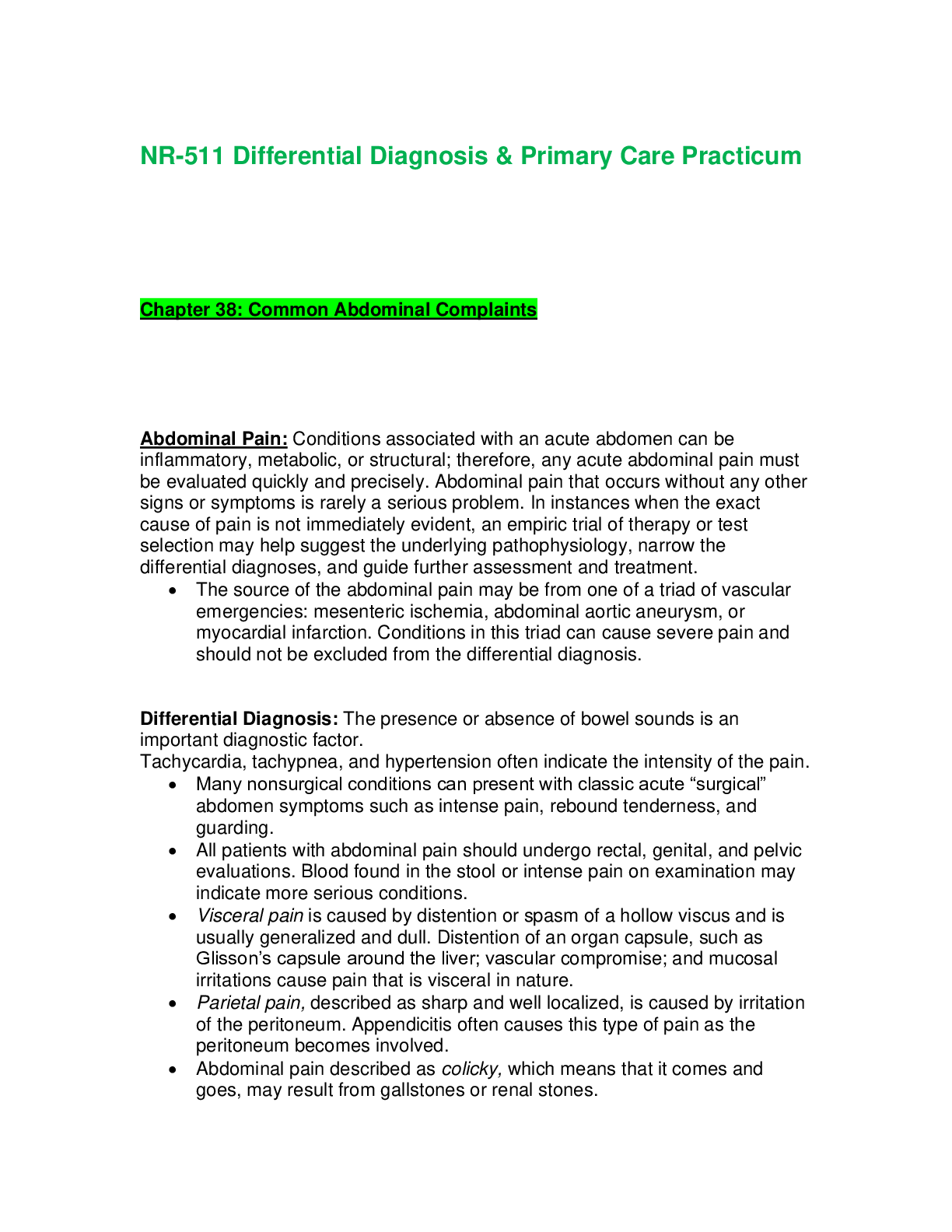


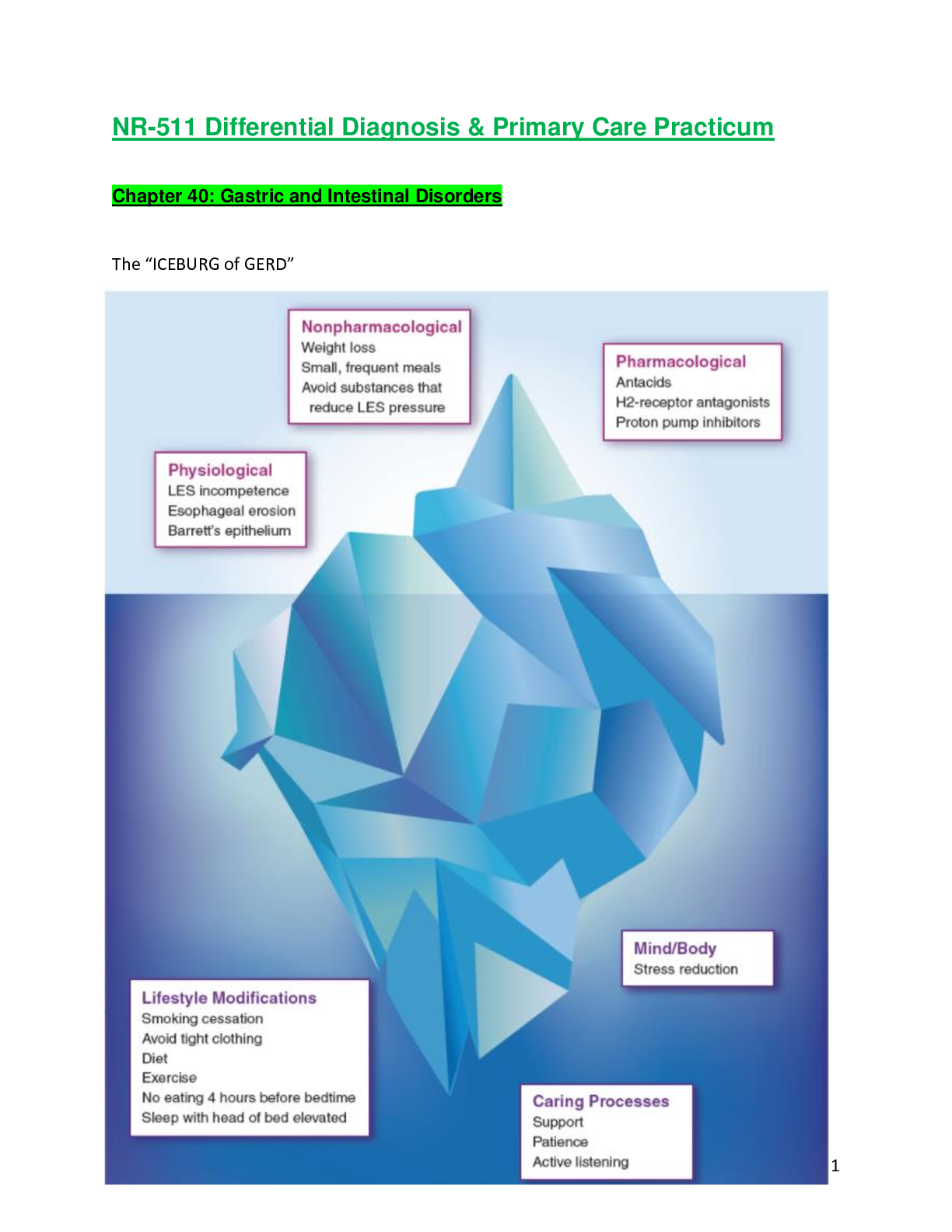

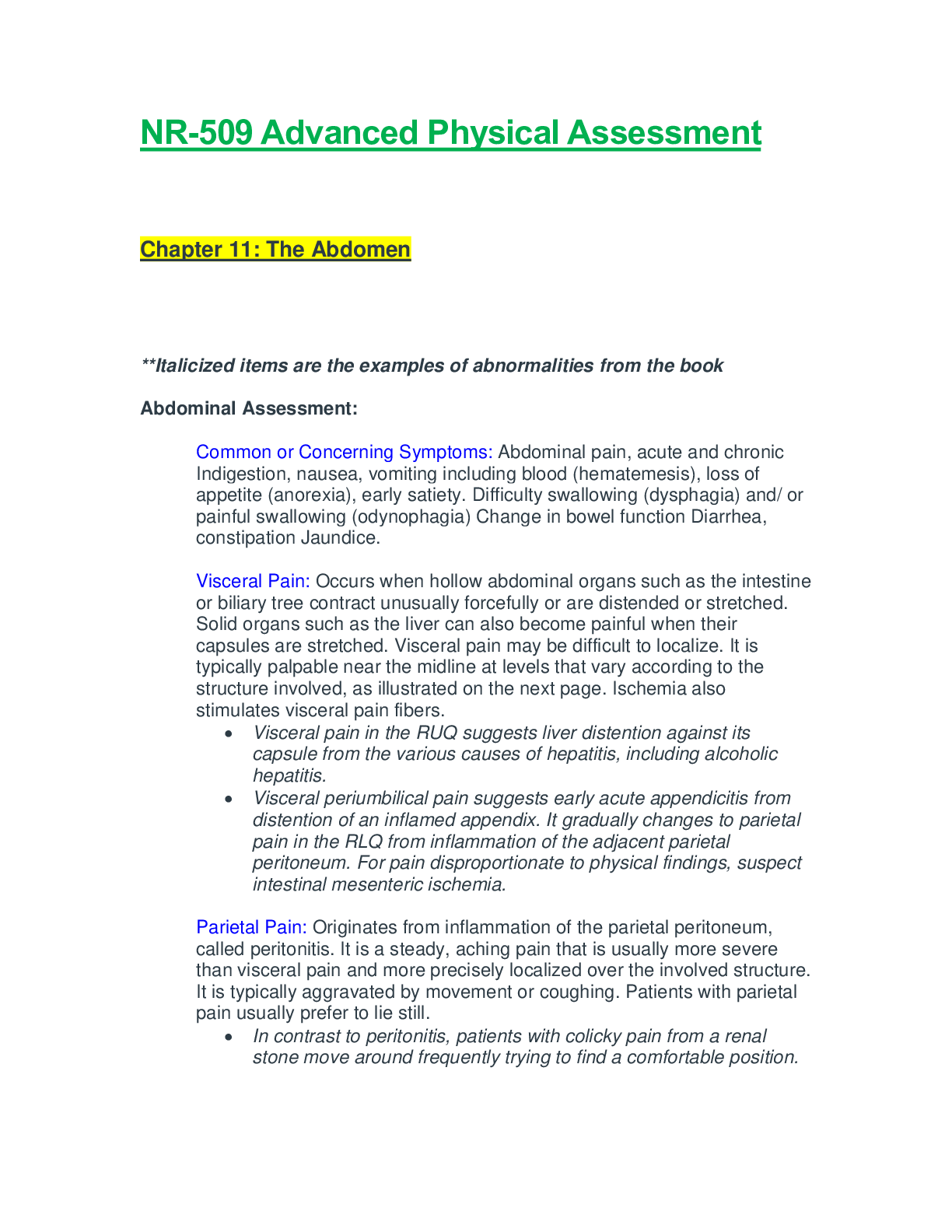
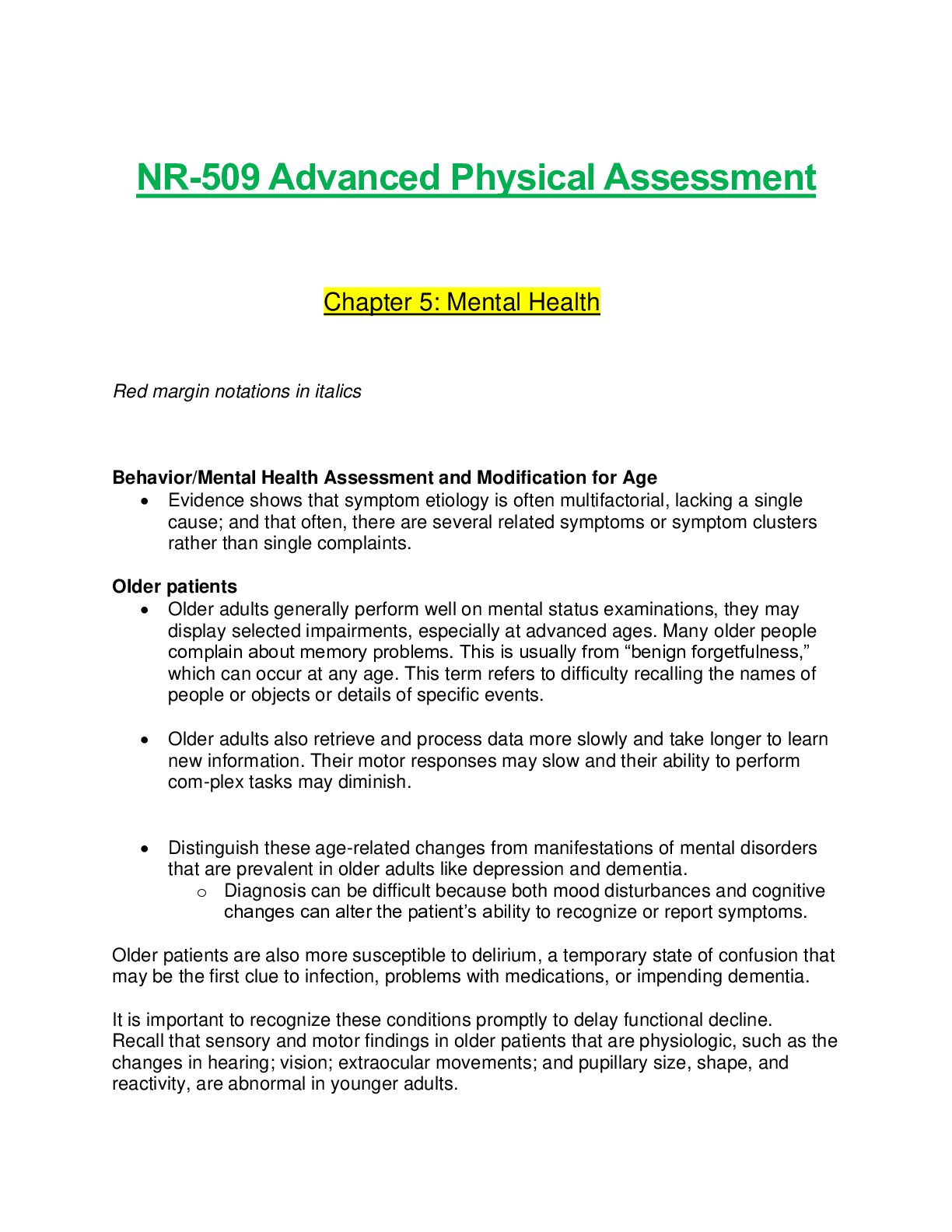
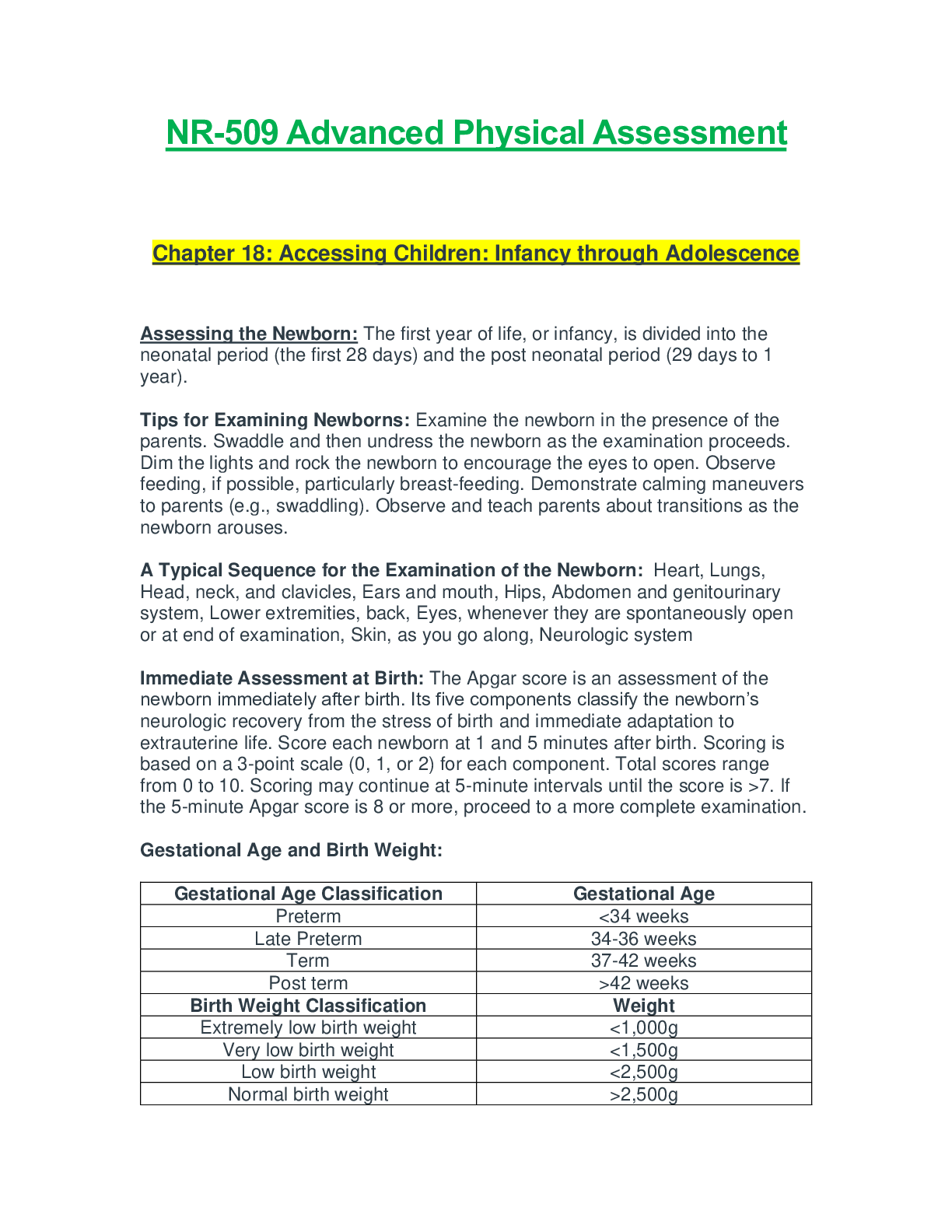
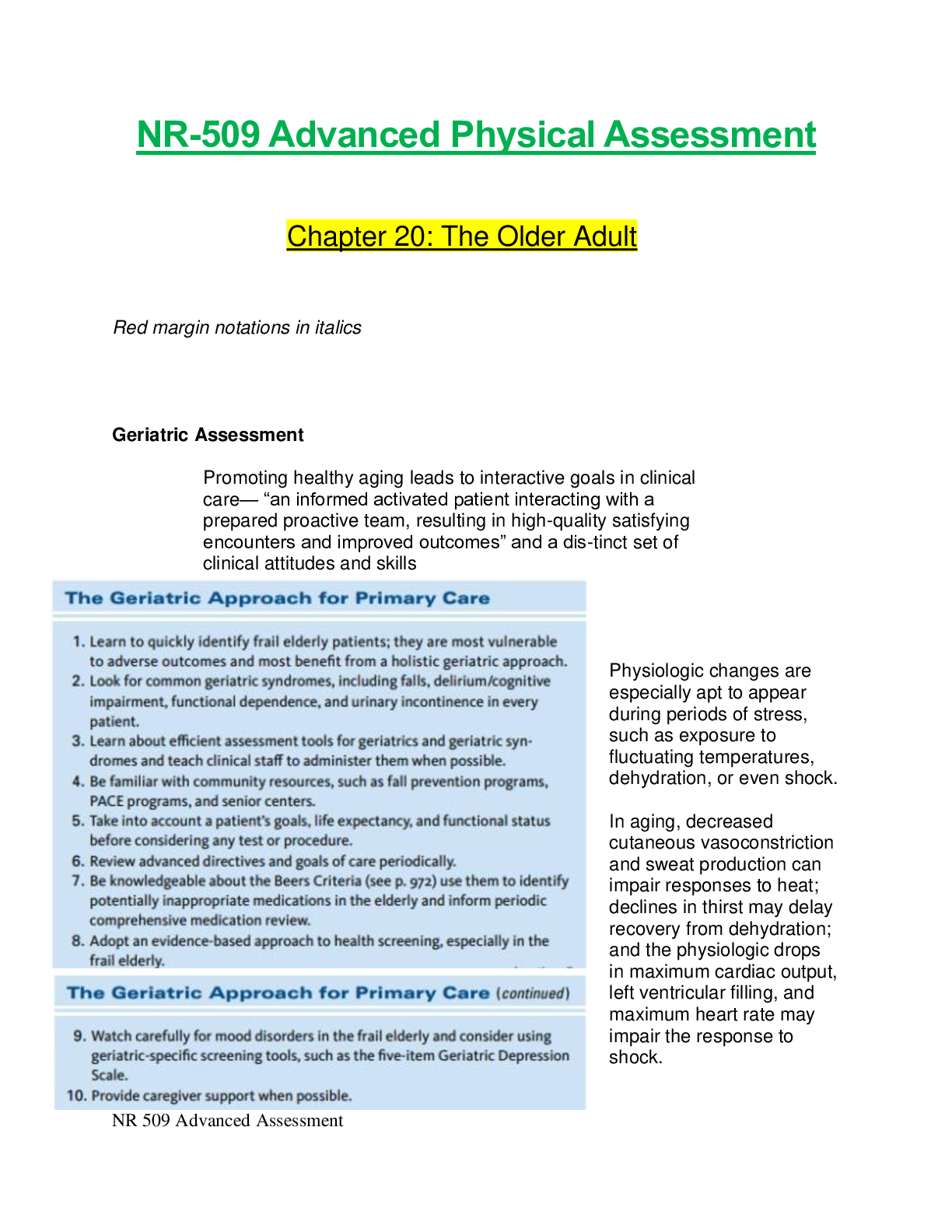
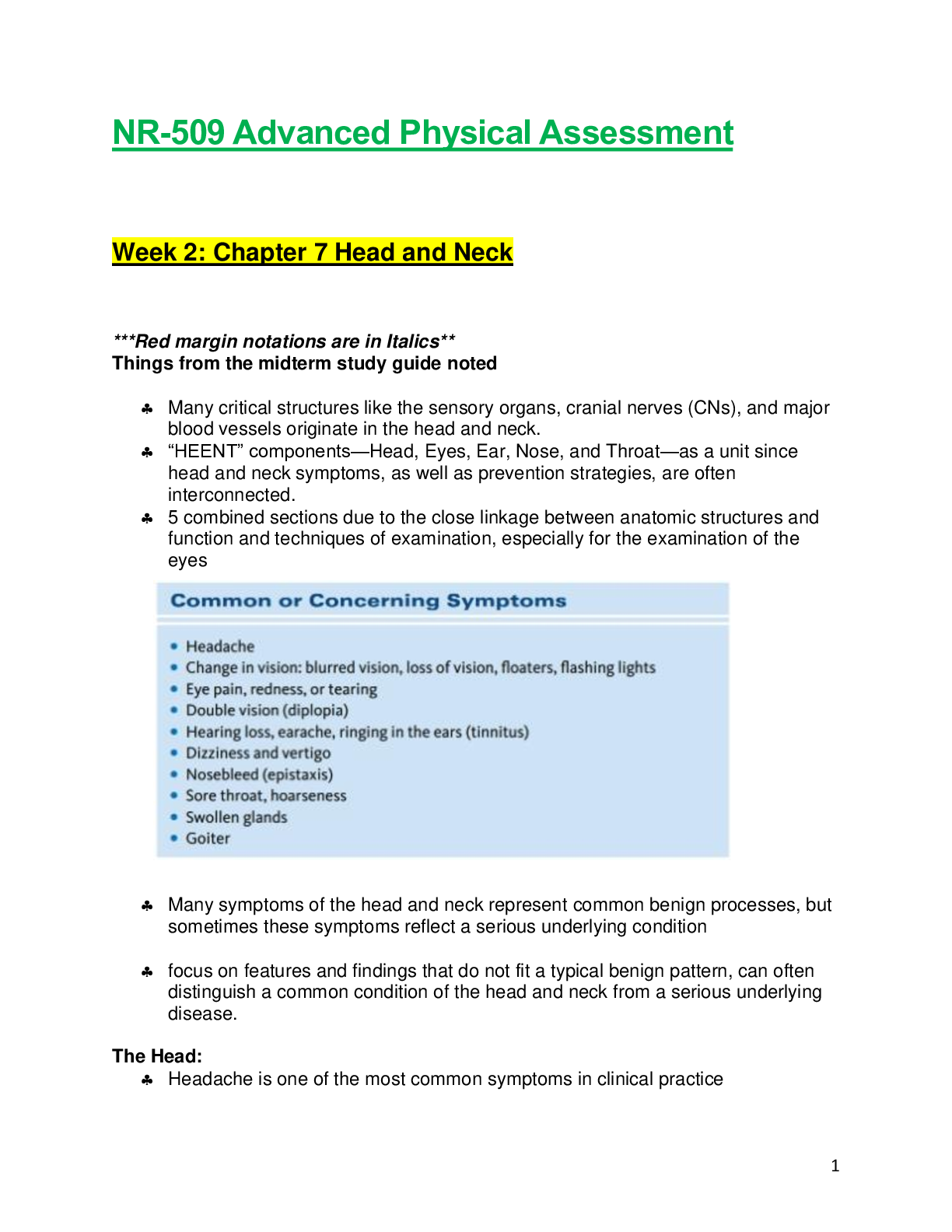
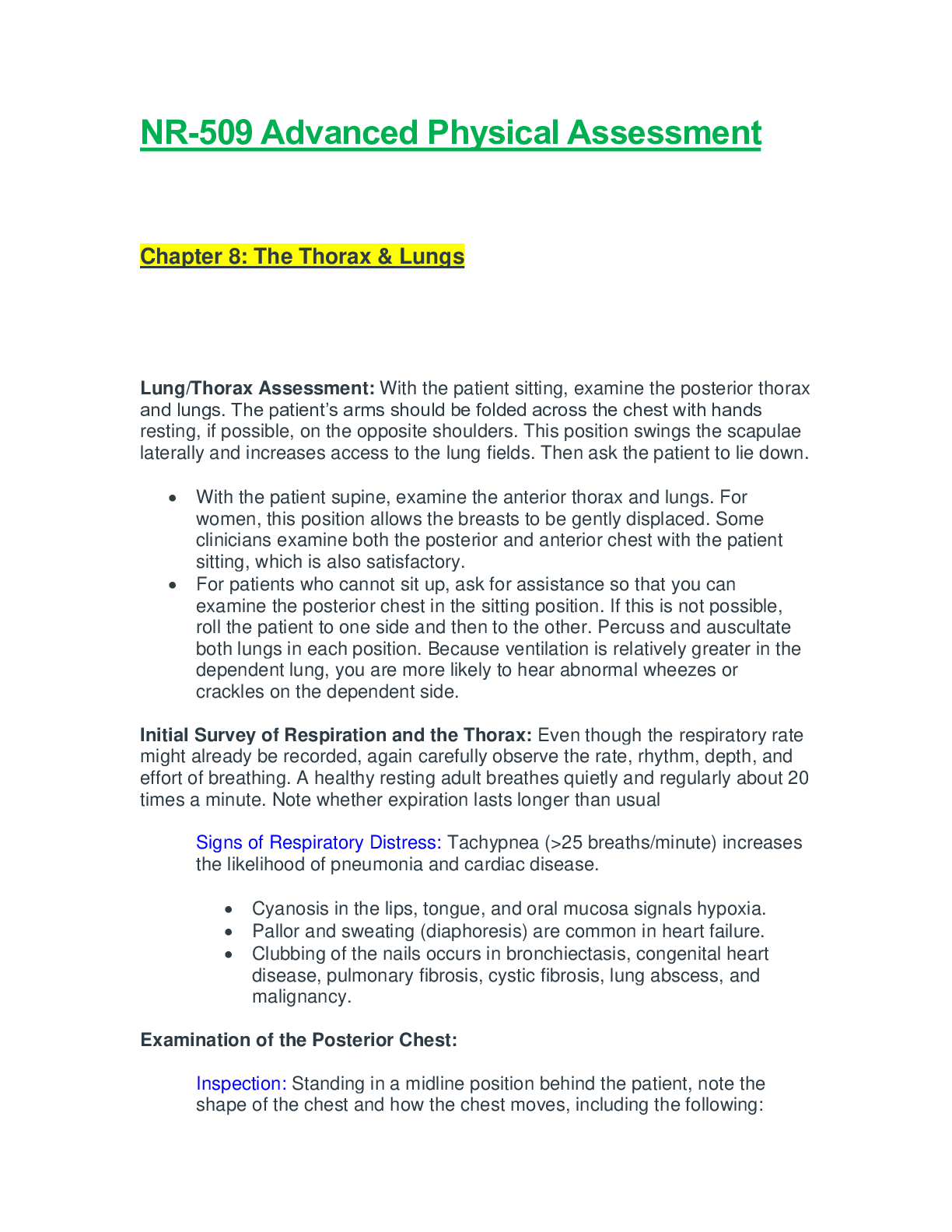
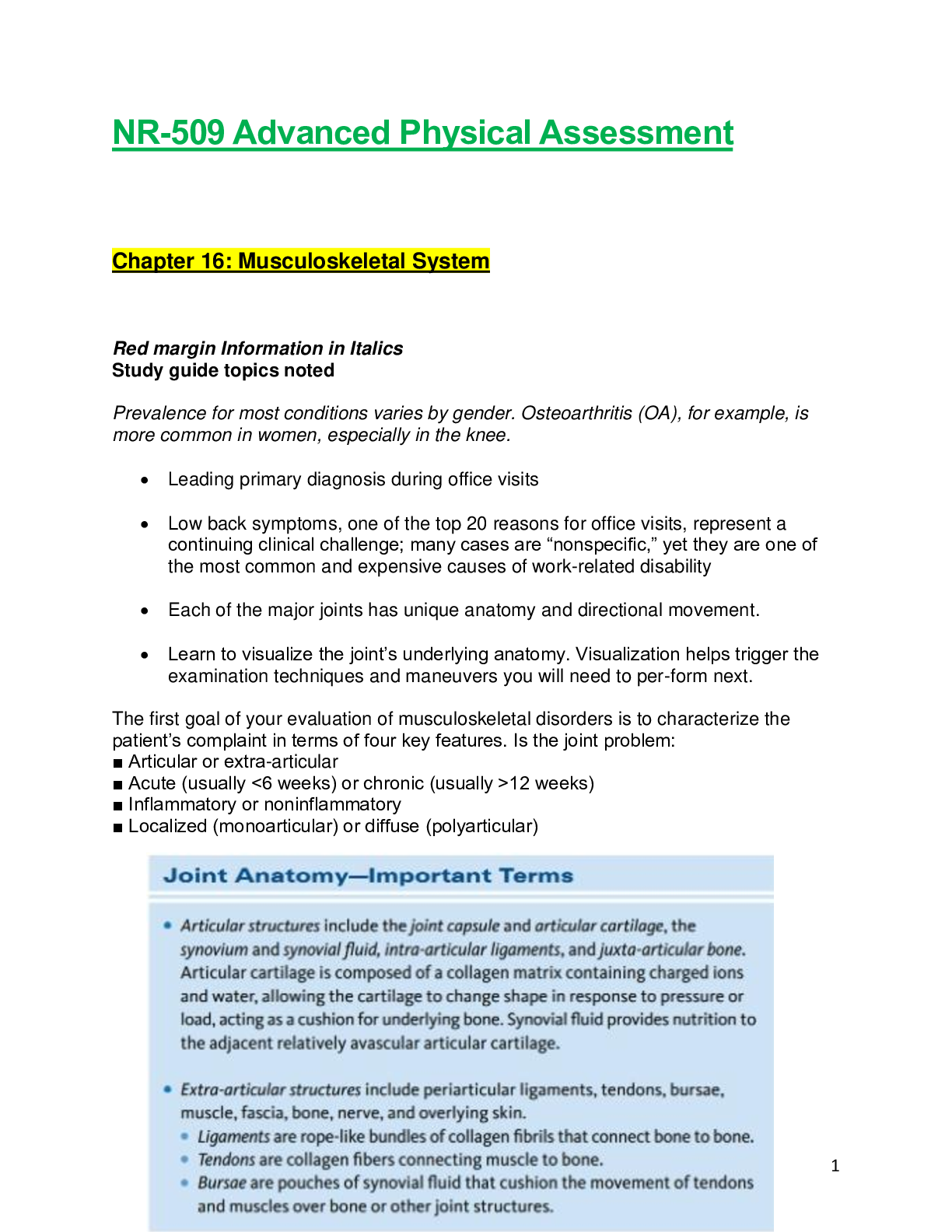
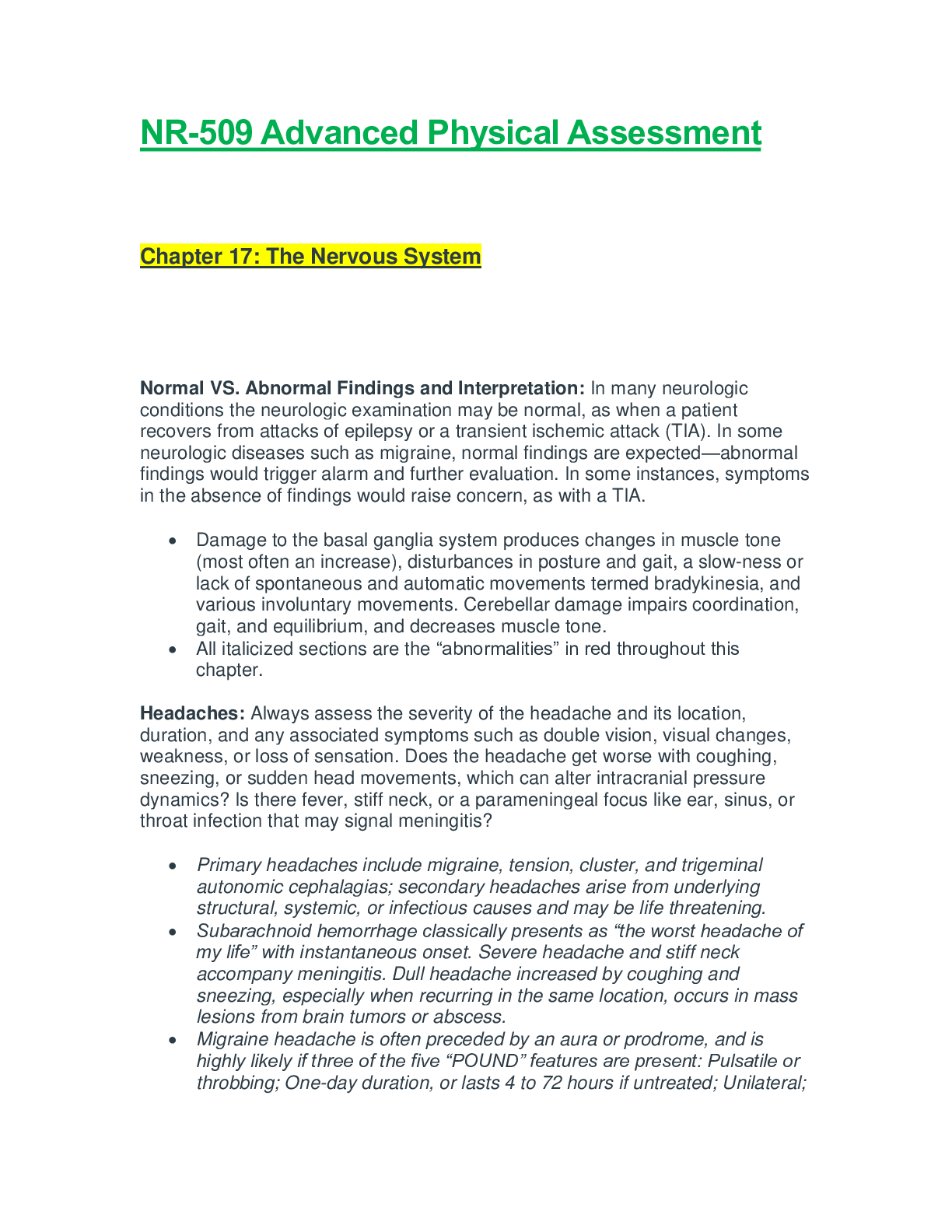

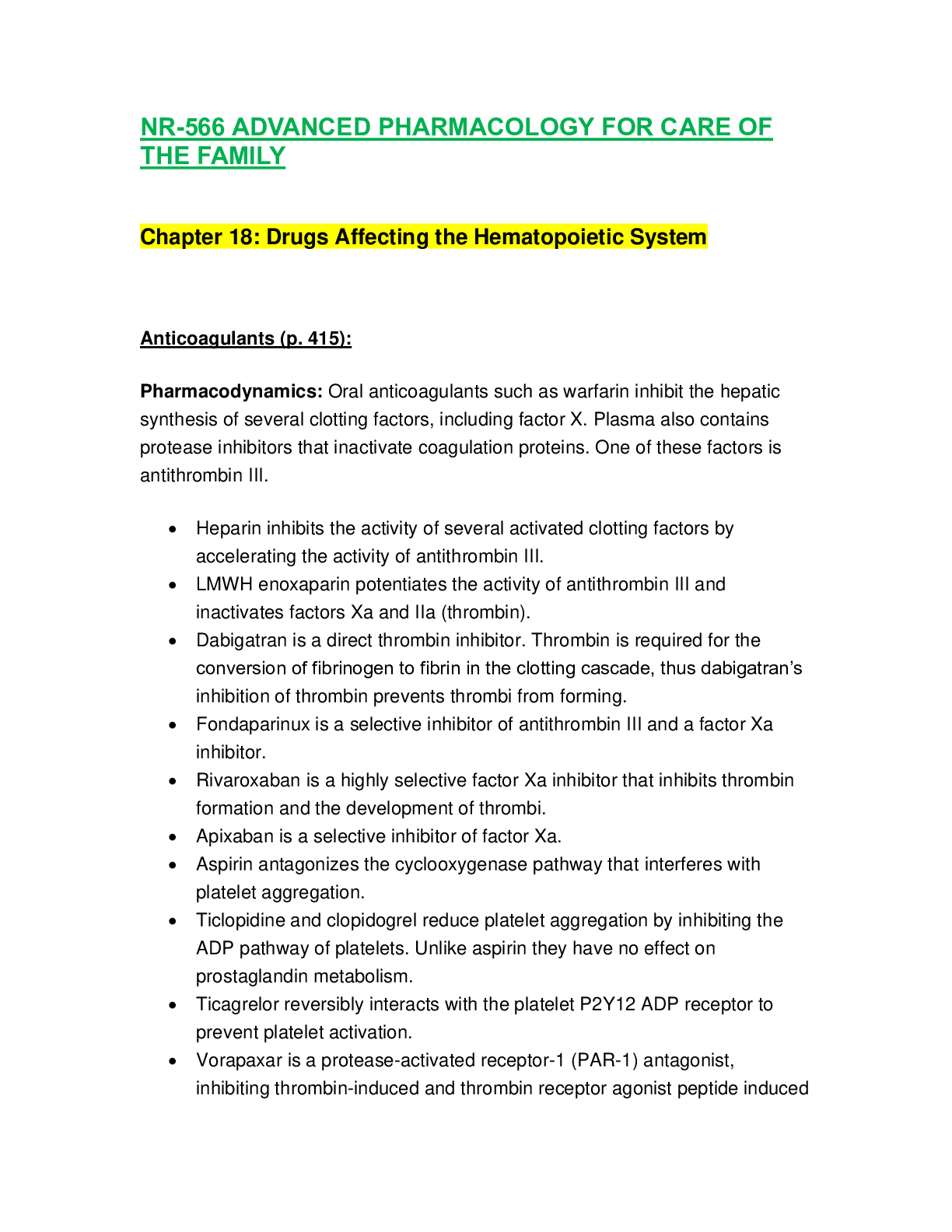
.png)

